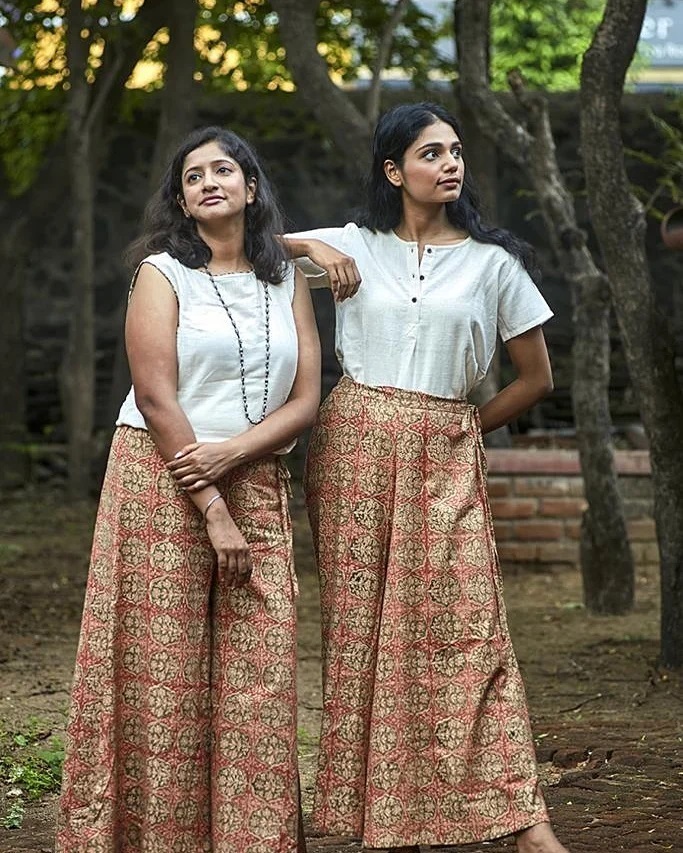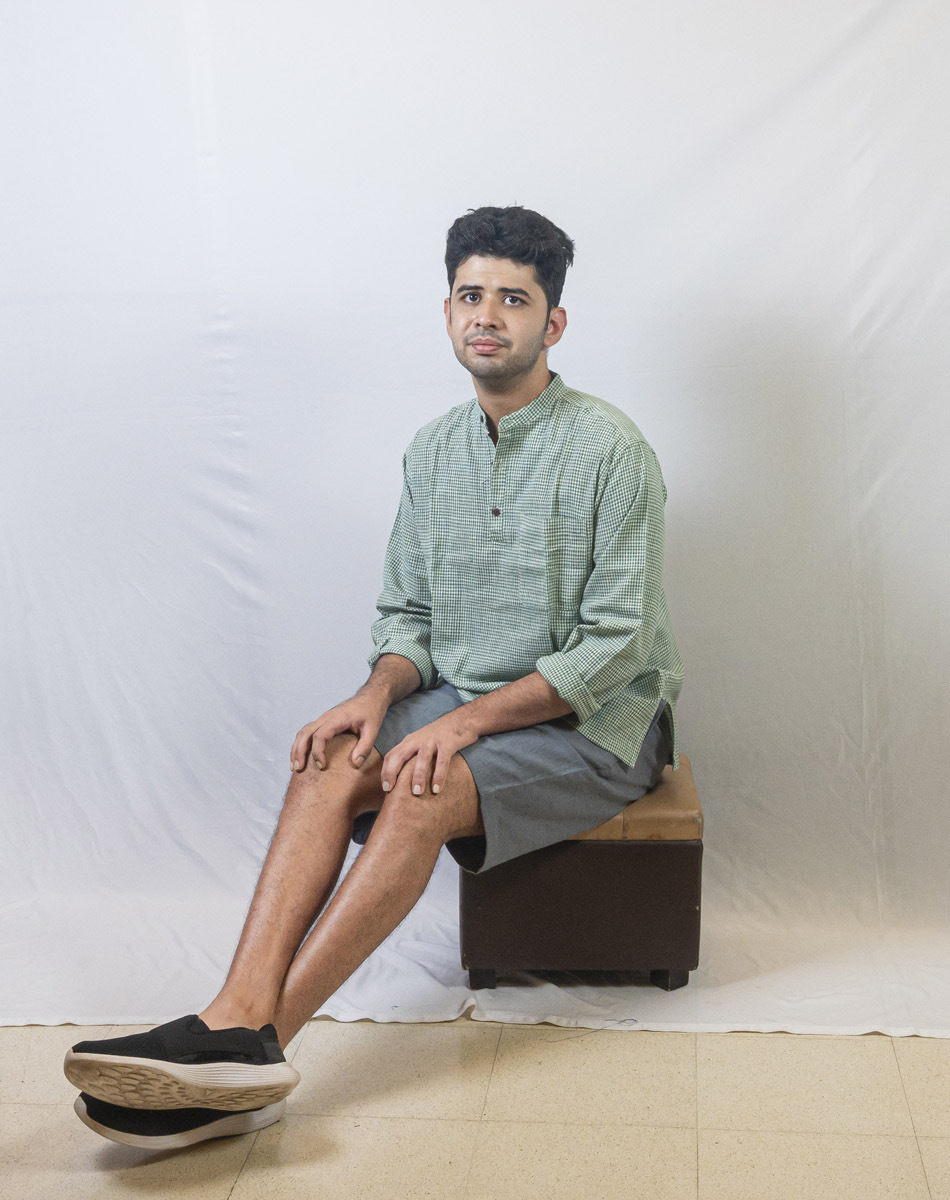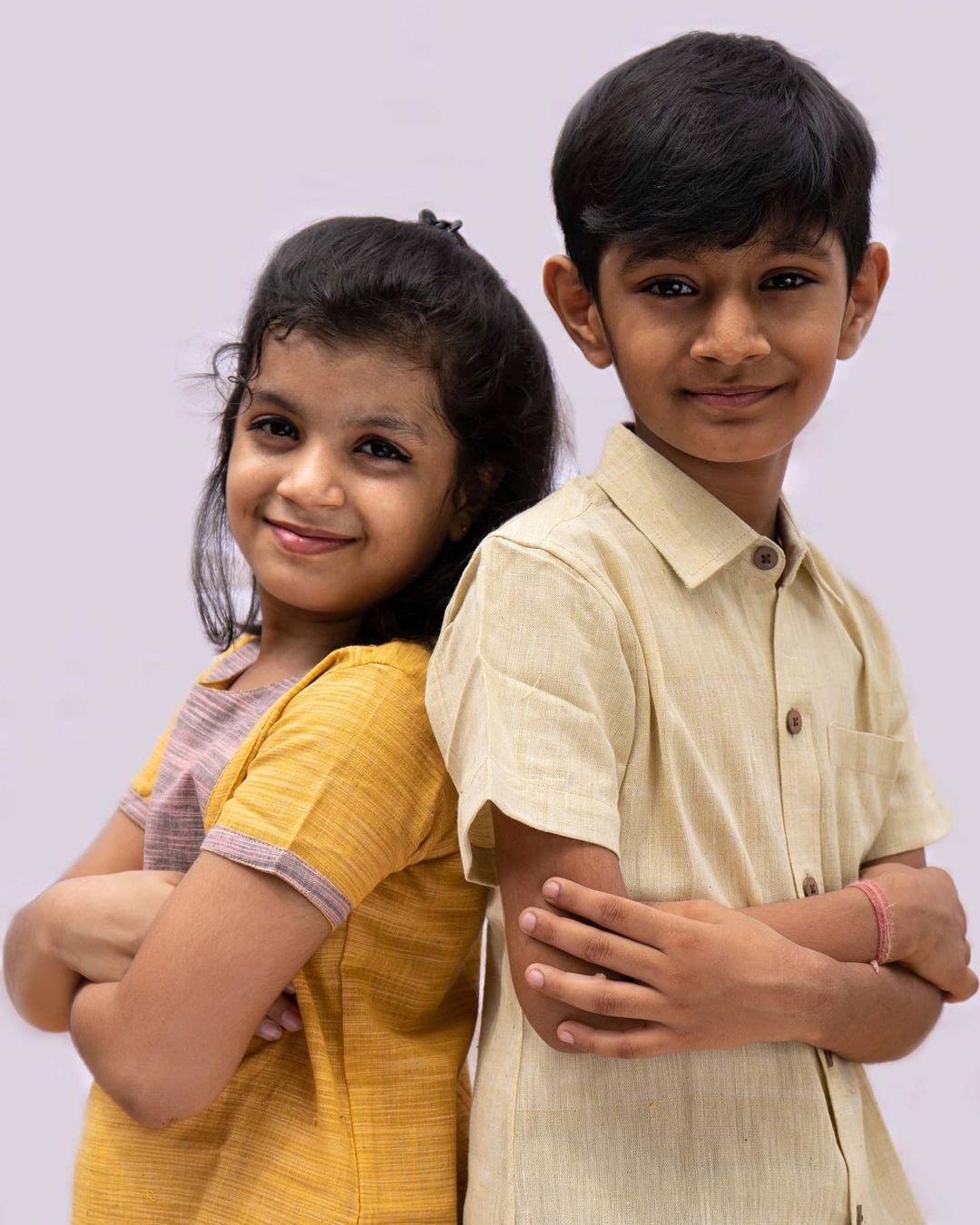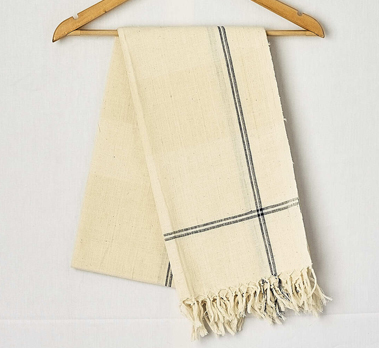Tula India – Organic Desi Cotton, Handspun, Handwoven, Natural Dyed and Manual Tailored Clothing
- About Us
- Products
-
-
-
-
- WomenChoose from a wide range of colourful Tops/kurtis made using rainfed organic cotton, hand spun, hand woven, naturally dyed and manually tailored.
- MenFrom half sleeves to full sleeve shirts, short kurtas to long kurtas. Make your choice!
- Bottoms & OthersChoose from our range of unisex pajams, Palazzo, Shorts, Towels and more
- KidsA wide collection of kids wear for boys and girls using the finest and softest cotton.
- FabricsTake a look at our collection of handspun and naturally dyed eco-friendly fabrics.
-
-
- Value Chain
- Tula Ambassadors
- News
- Events
- Blog
- Gallery
- Contact Us
Organic Rainfed Desi Cotton + Handspun +
Hand Woven + Naturally Dyed + Manually Tailored
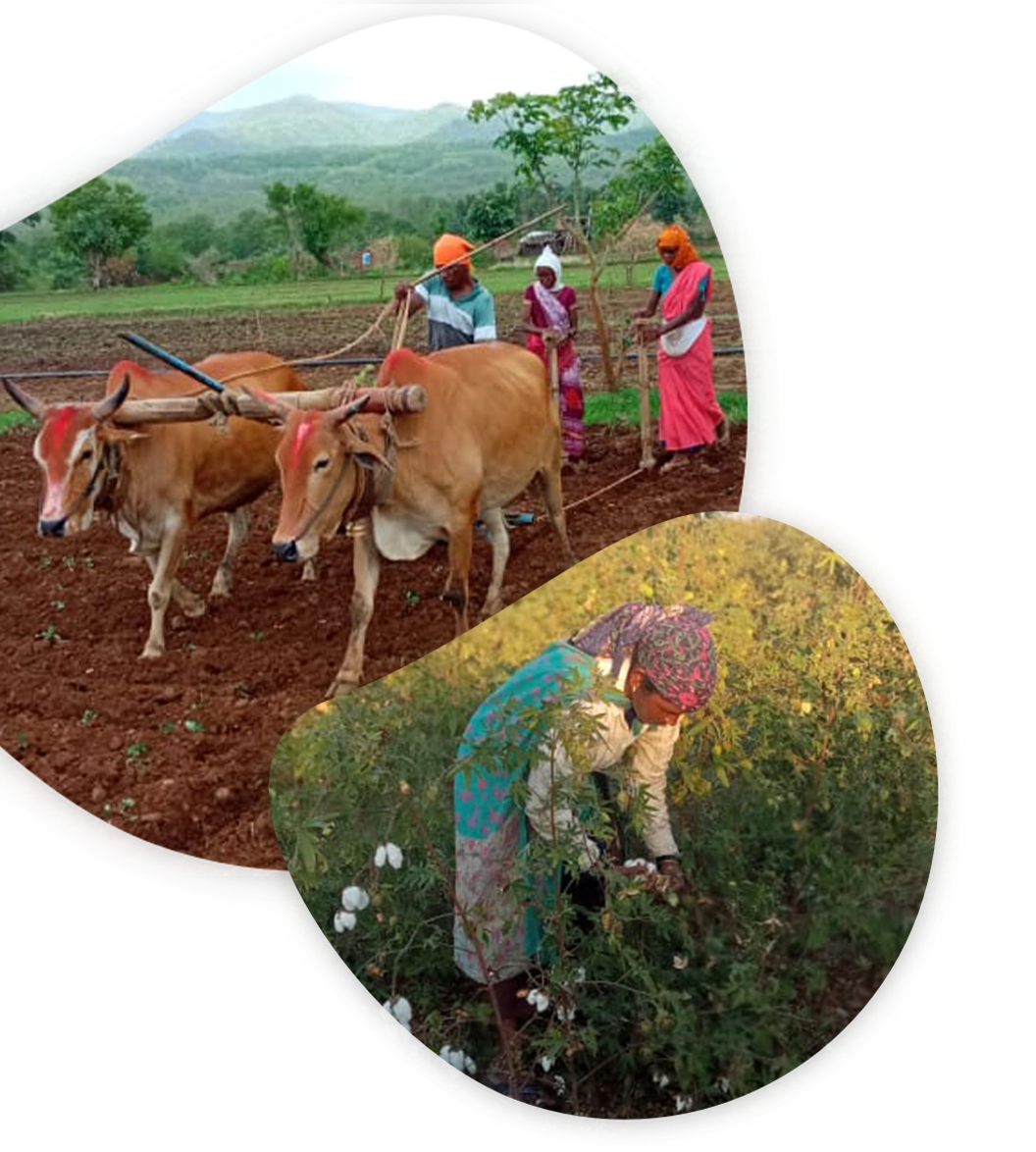
Organic Cotton Farming
Tula is one of those rare organisations that brings about the clothing all the way from farm till the garments (Khet se Kapda tak). The cotton that is grown in rain fed conditions and that too organically from traditional Indian seeds i.e Desi seeds is what is procured by Tula at fair prices, thus ensuring dignified income to the farmers. Growing the Desi cotton sustainably also means its always practiced as a mixed crop, thus more crop diversity on the field is ensured which ends up bringing food also along with fibre to the farming household.
In India the indegenous, traditional cotton was always grown along with 8 or more crops. In Tamilnadu for instance Karunganni is always grown along with coriander, onions, ladies finger, millets & pulses. In Karnataka, Jayadhar cotton is grown along with chilli and some vegetables, pulses, etc (there are times when Chilli has got the farmer more income than cotton!). In Meghalaya they used to grow Kihl cotton (Comila) along with 15 other crops including a short duration Paddy!
The cotton thus grown organically without any chemicals is also grown in rainfed conditions, thus not depleting the ground water by sucking them up to the surface indiscriminately, is drought resistant and pest repellent in nature too.
The seed sovereignty is also ensured since the seeds are saved and used by the farmers like it was done for 10s of 1000s of years (unlike the GM cotton where the farmer has to go to the MNC and buy again and again, season after season). All these ensure the input costs are minimal thus rendering both economical & ecological sustainability.
Tula works with farmers who grow traditional desi cotton of the respective areas in Akola (Maharashtra), Hubli/Belgaum (Karnatka), Perambalur/Dindigul (Tamilnadu). It is indeed very sad that not once in the past few years we could procure in all three states. Such is the effect of weather vagaries and the climate crisis, sadly. More and more reiterating the necessity to move to sustainable agriculture where practices that conform to traditional seeds, ecological inputs n bio pest management techniques, crop diverstity, less use of resources and so on.
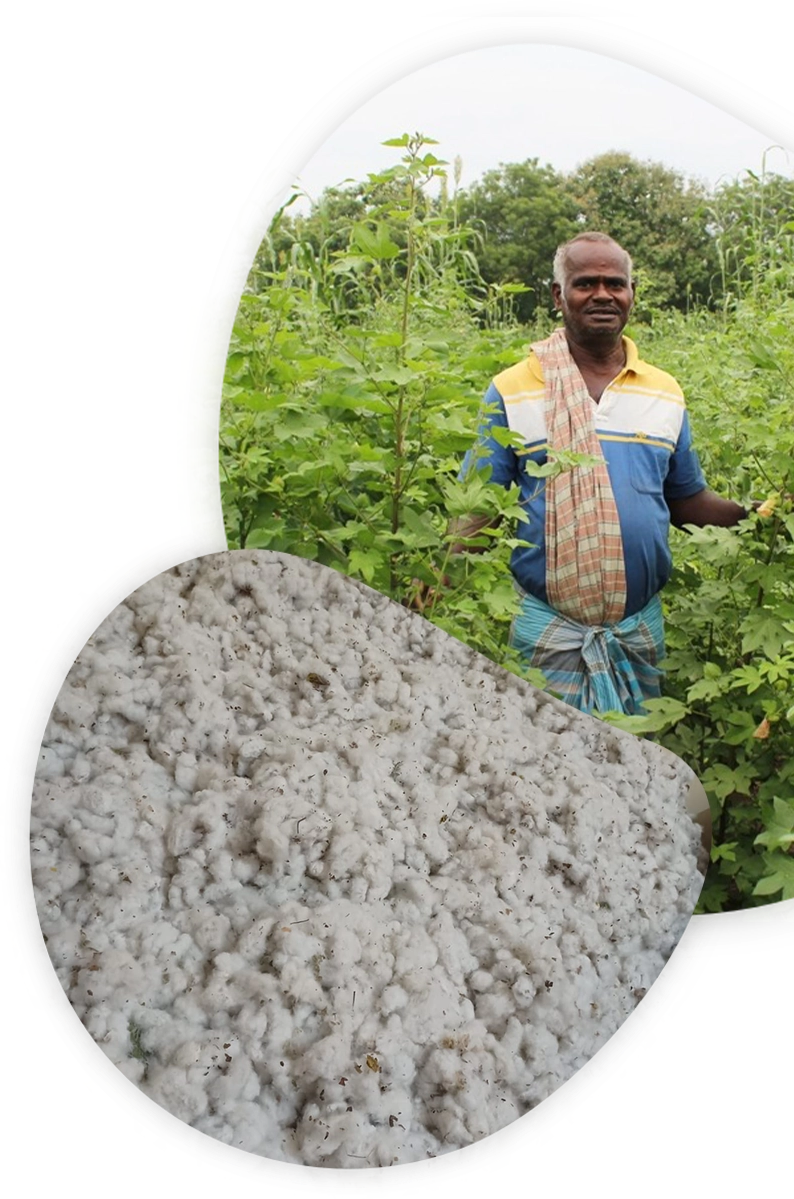
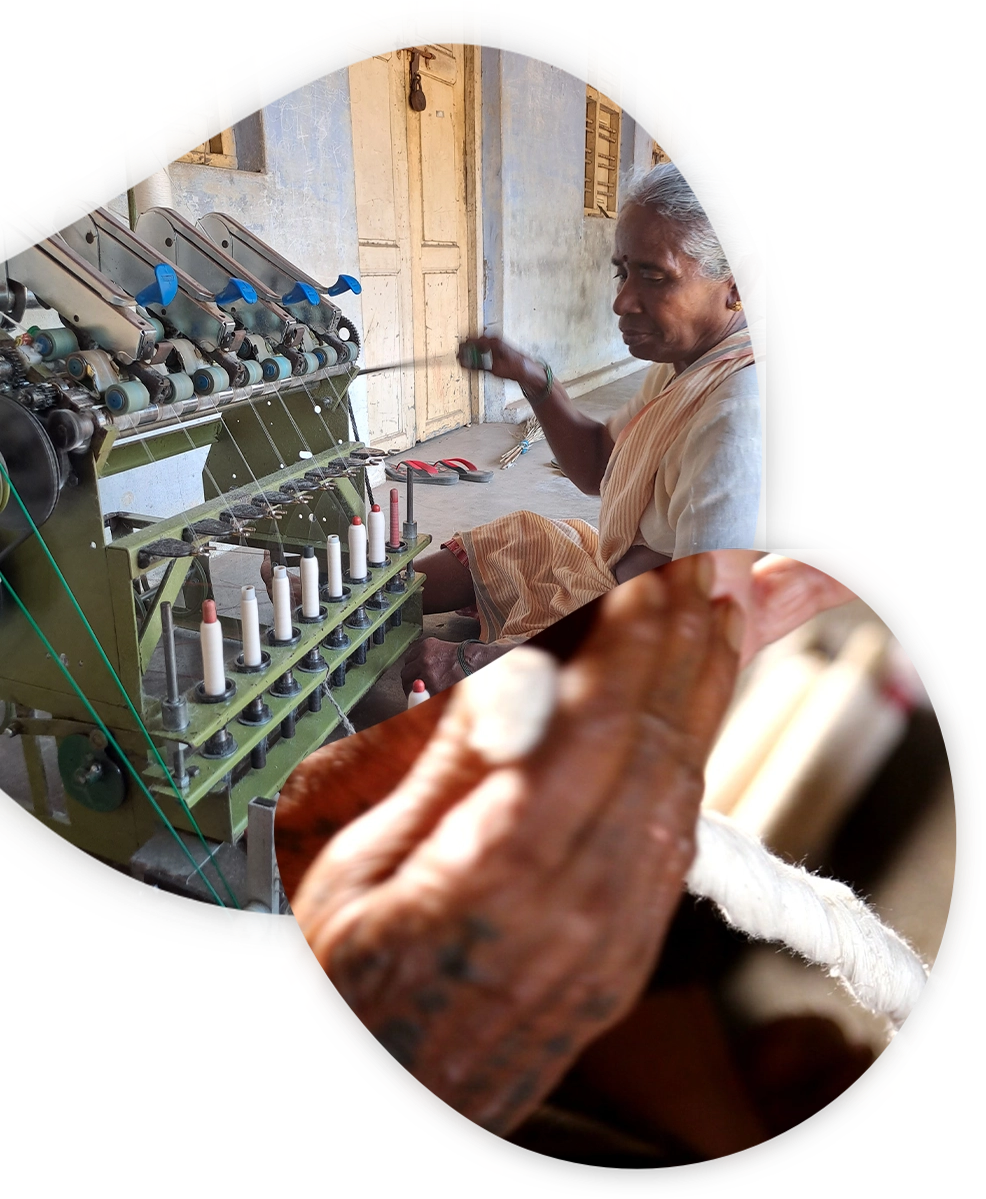
Hand Spinning: (Khadi/Khaddar)
Hand spinning is a very old technique used to spin fibres since neolithic age. In this age of heavy mechanisation this is indeed viewed as an act of drudgery. It will be right to try and avoid some initial parts of spinning (like carding up to roving) with some low end low energy micro spinning options. Tüla is investing lots of time and energy in this front, where the hard work/labour can be eased and reduced but the machine should be such that a rural Indian woman can buy, use and maintain. Thus, not becoming the humungous machine/mill that will replace and push 1000s off their livelihood.
Hand spinning was such a decentralised activity and a revenue spinner for many rural folks till few decades back. In these days of regular economic crisis (man made) and the intense failures of the various economic models, such allied additional income to the rural Indian households especially women proves to be of great use.
It is indeed interesting to note that during the freedom struggle days, one had to spin 30 grams of yarn and submit it to become member of congress.
Gandhiji used this highly meditative art both for himself and as a tool to fight the British.
Hand spinning these days involves prespinning by machines and the conversion to yarn from roving happens in amber charkhas- manually operated machine with 6-8 spindles.
Tula works with spinners associated with the Khadi and Village Industries Board in Gadag (Karnataka), Gram Sewa Mandal (Maharastra), Gandhigram (Tamilnadu), Avarampalayam Sarvodaya Sangh (TamilNadu) who are part of TÜLA when it comes to hand-spinning.
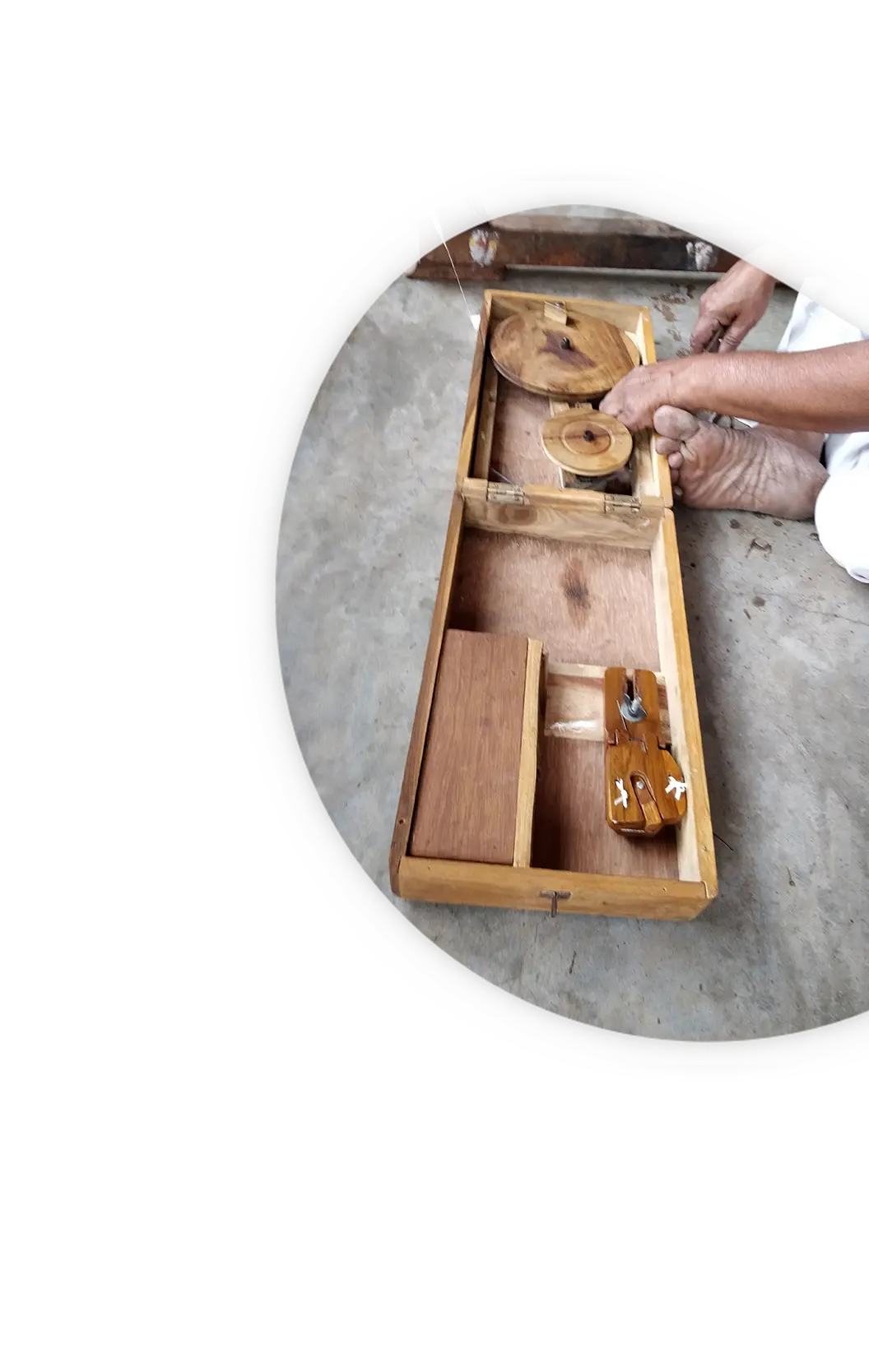
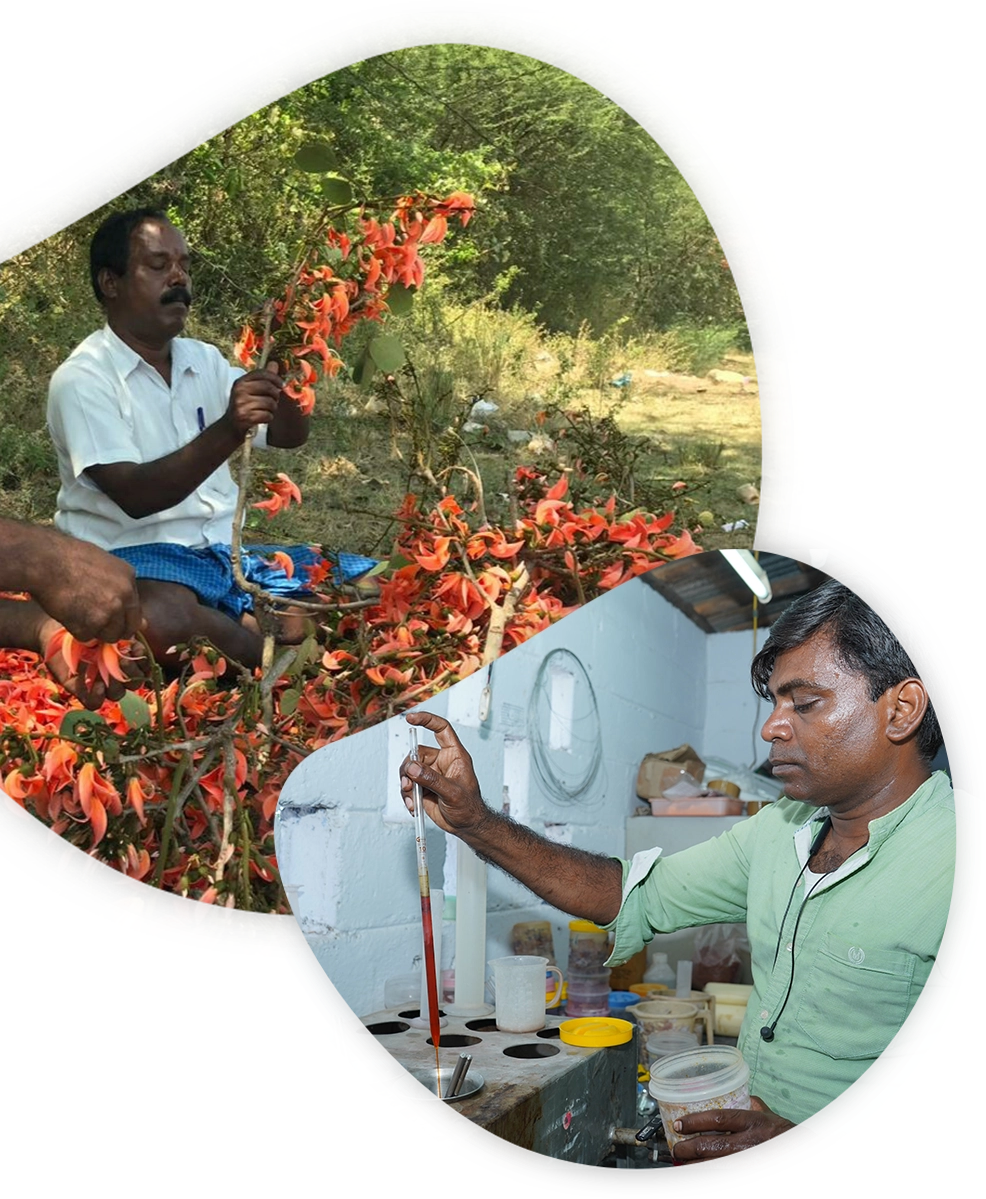
Natural Dyeing:
These are colours derived from renewable sources like plants, minerals etc. Plant sources being bark, berries and fruits, leaves, flowers, roots etc
This 1000s of year old tradition was displaced by the invention of the chemical dyeing. The synthetic dyes set off the decline of the natural dyeing and also resulted in major “pollution, to the extent that the dyeing towns have become un-liveable”. The water contamination is so high in the Tamil Nadu dyeing town of Tiruppur, where the river Noyyal has turned totally black because of the effluents from the dyeing units. The ground water is also highly contaminated in these areas, rendering it unfit for even agricultural purposes, let alone drinking.
It is estimated that over 10,000 different dyes and pigments are used industrially and over 7,00,000 tons of synthetic dyes are annually produced worldwide. The textile industry consumes a substantial amount of water in its manufacturing processes, used mainly in the dyeing and finishing operations of the plants. The wastewater from textile plants is classified as the most polluting of all the industrial sectors, considering the volume generated as well as the effluent composition. Azo dyes, more ubiquitously used considered and proven carcinogenic and mutagenic have found their way to lakes, rivers and even our drinking water inspite of treatment/filteration.(source: fibershed)
Taking stock of the various pollutants, long term environmental impact and our own health, it is best to go the natural dyeing way.
Today the world, especially the West is turning back to natural dyes. To help your own health and that of the environment and to revive the dy(e)ing art, support Natural dyeing. But be assured the natural Kora colour of cotton without any additional process and colour is any day the best- environmentally! If at all colour has to be there, let it be the regenerative natural pastel colours from plant material.
At Tula we perform both fabric dyeing and yarn dyeing. Our natural dyeing avoids synthetic mordants (the colour fixing agents which are allowed to be synthetic by most standards worldwide) and use only natural mordants and experiment without mordants too. Each of the color derived means a host of experiments and hand process.
Tula’s natural dyeing are mostly done at Wrukshatone (TamilNadu), small quantities in Gandhigram (TamilNadu) and Janapada seva Trust (Karnataka). Given below is a list of colors derived from various plants products.
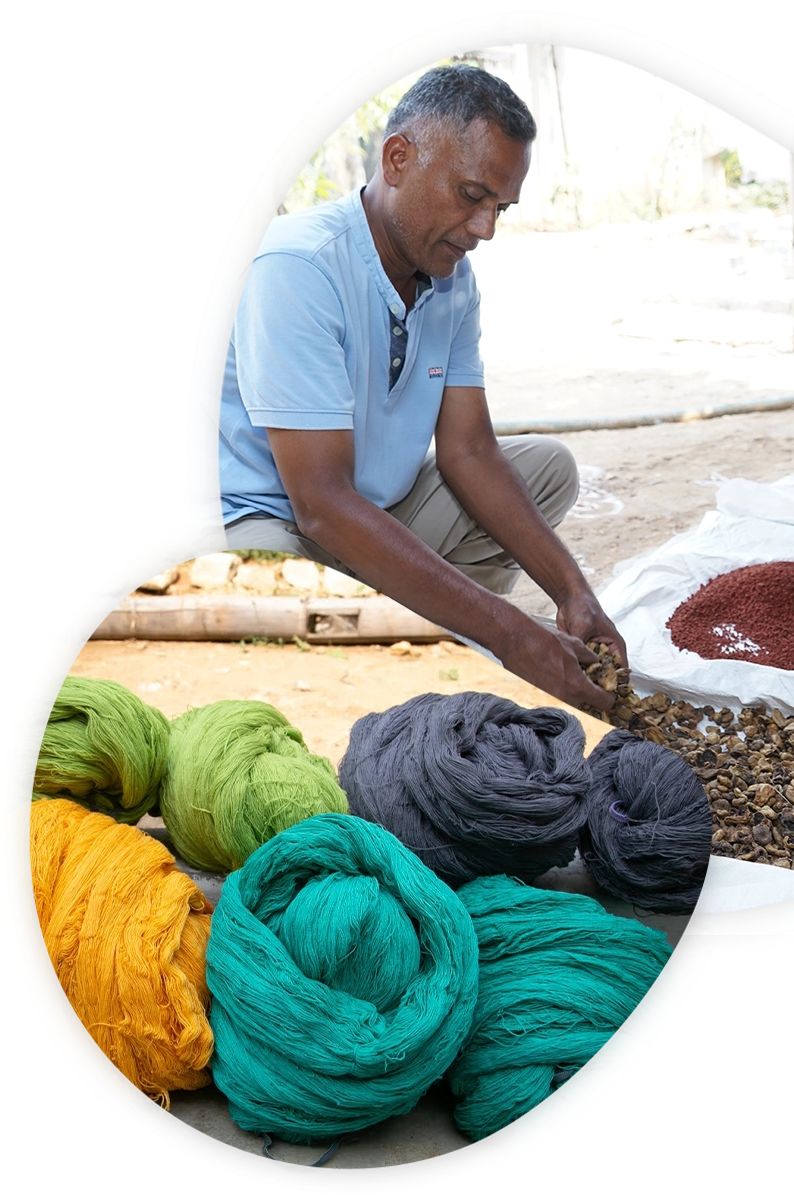
Natural Dye Shades


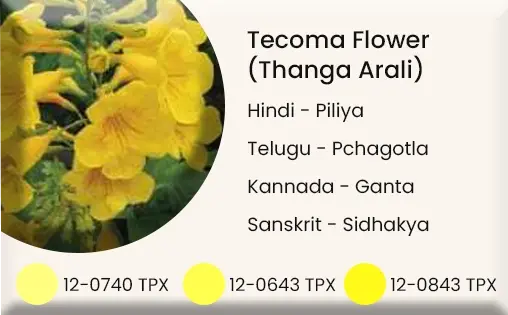
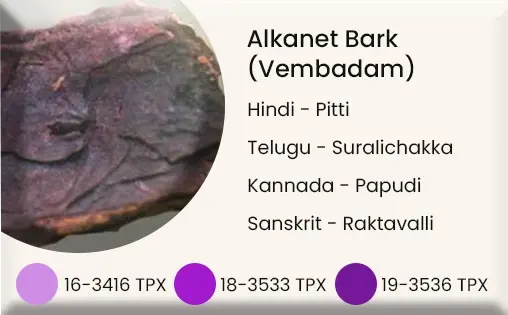
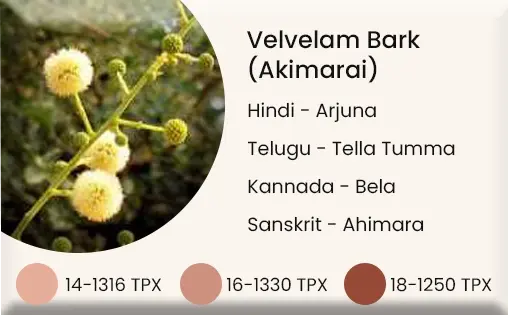
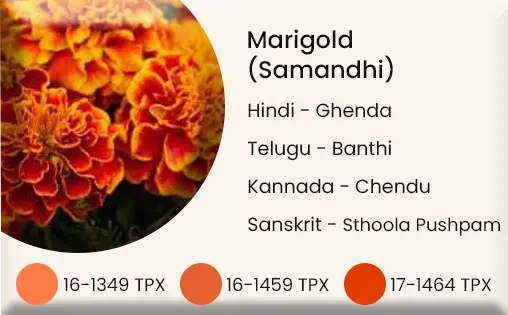
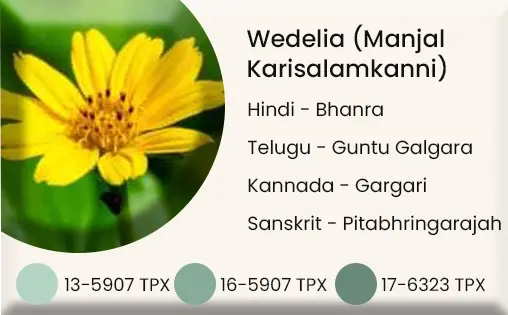
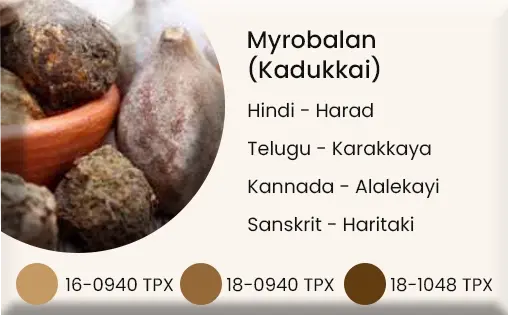
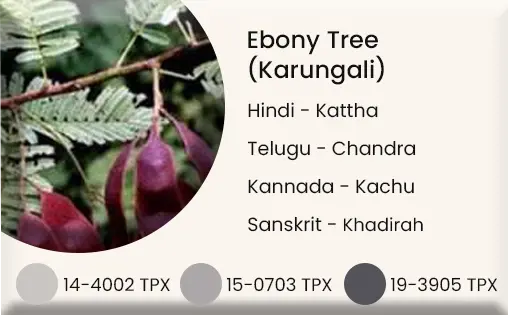
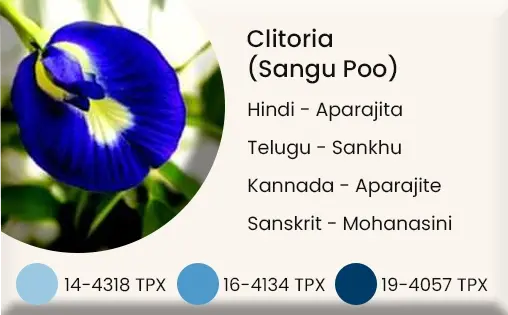
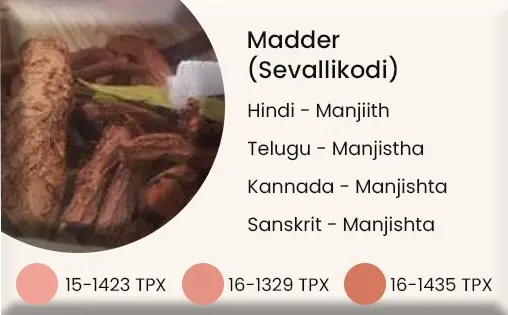

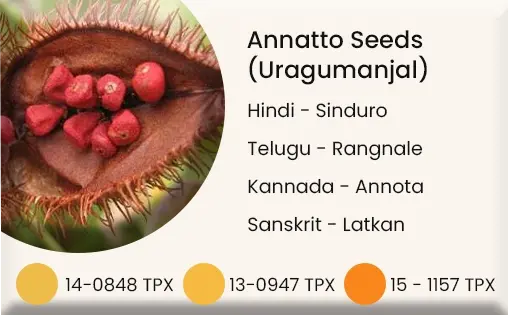









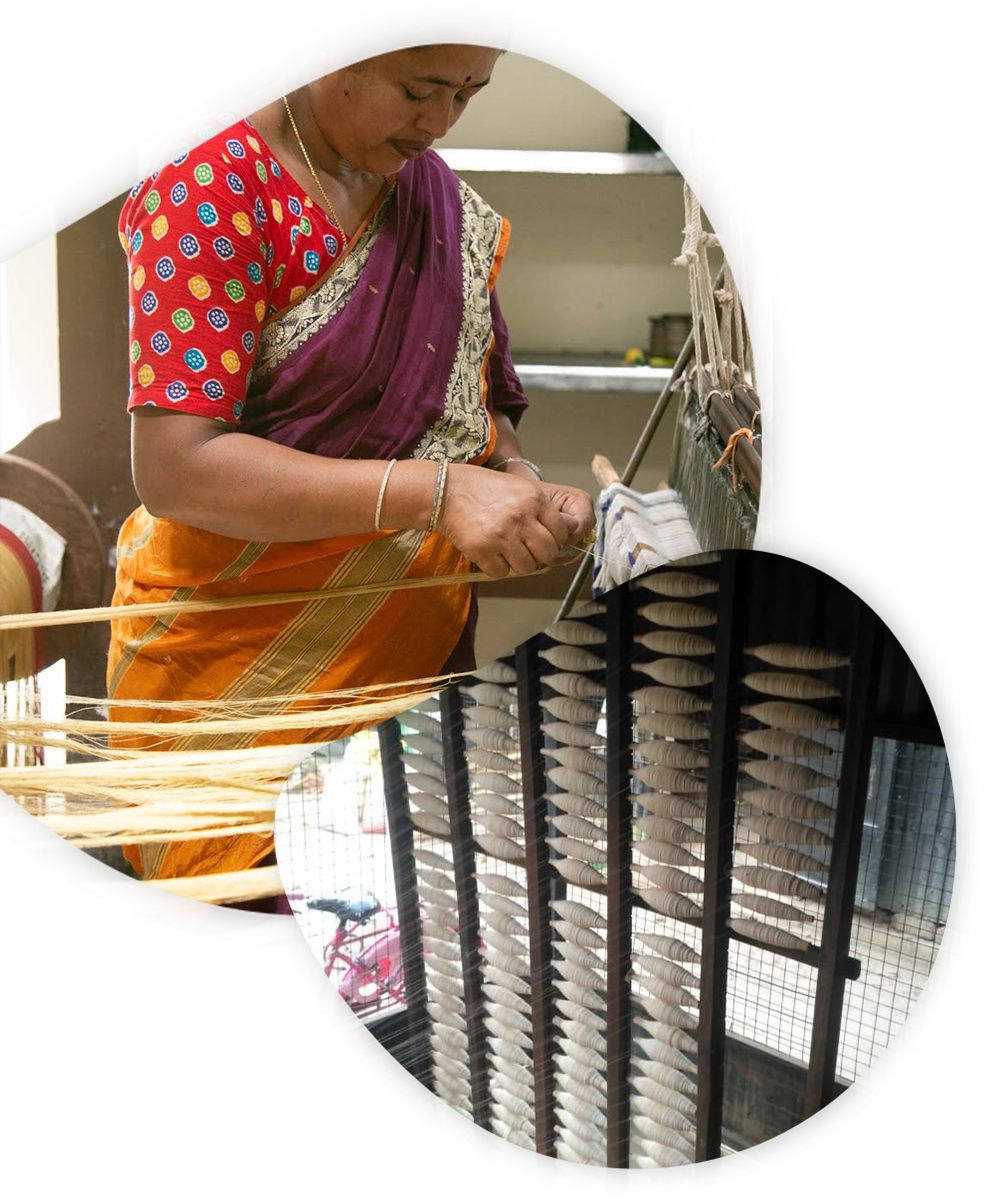
Hand Weaving
TÜLA has joined hands with Janapada Seva Trust in Melkote village of Mandya district of Karnataka, Narayan Khadi Bhavan (West Bengal), Chitrika (Andhra), Nidagundi (Karnataka), Gandhigram (TamilNadu) to ensure that the desi cotton yarn handspun skillfully is then dyed with natural colors is woven into fabric in these places with utmost care.
Supervised by “Master weavers” to ensure good quality, the effort here is to support livelihoods of weavers and make it attractive for a new generation to learn this skill and art.
Hand weaving is a unique way by which yarn, in 2 direction (warp and weft) is interlaced to produce fabric/cloth. The weaving is normally done with hand loom- a specialised machine to intricately weave the yarn in to fabric, by hand. This is also a traditional art with so many variations with different areas having some specialty styles (Ikat, Banarasi, Kanchi, etc) which needs to be supported and brought back. The power looms are huge machines, an industrial process that takes away lots of livelihoods and a very eco-unfriendly process.
The power and other resources sucked up by power looms is way too high and hence very unsustainable. Unless the urban India and the new India patronises these hand spun and hand woven fabric and garments, these will be lost soon. Tüla ensures the skill is not lost as well as the Artisans are paid well enough to have a decent livelihood out of this hand weaving.
Note: Khadi/khaddar is any fabric that is both hand spun and hand woven. As the Britishers were going industrial and hence taking away livelihoods as well as raw cotton to Britain and producing clothes with machines, Gandhiji started the swadeshi movement and insisted on khadi being used and promoted heavily. Thus Khadi became a symbol of sovereignty and our freedom struggle. Today to ensure enhanced livelihoods and to revive this struggling art and also to bring back a great tradition, we urge you all to support Khadi- hand spun and hand woven garments. Another big reason Gandhiji and great gandhians like Vinobha Bhave and J C Kumarappa advocated khadi is because of the “distributedness’ it brings to the economy, creating rural livelihoods and sustaining local non-violent economy.
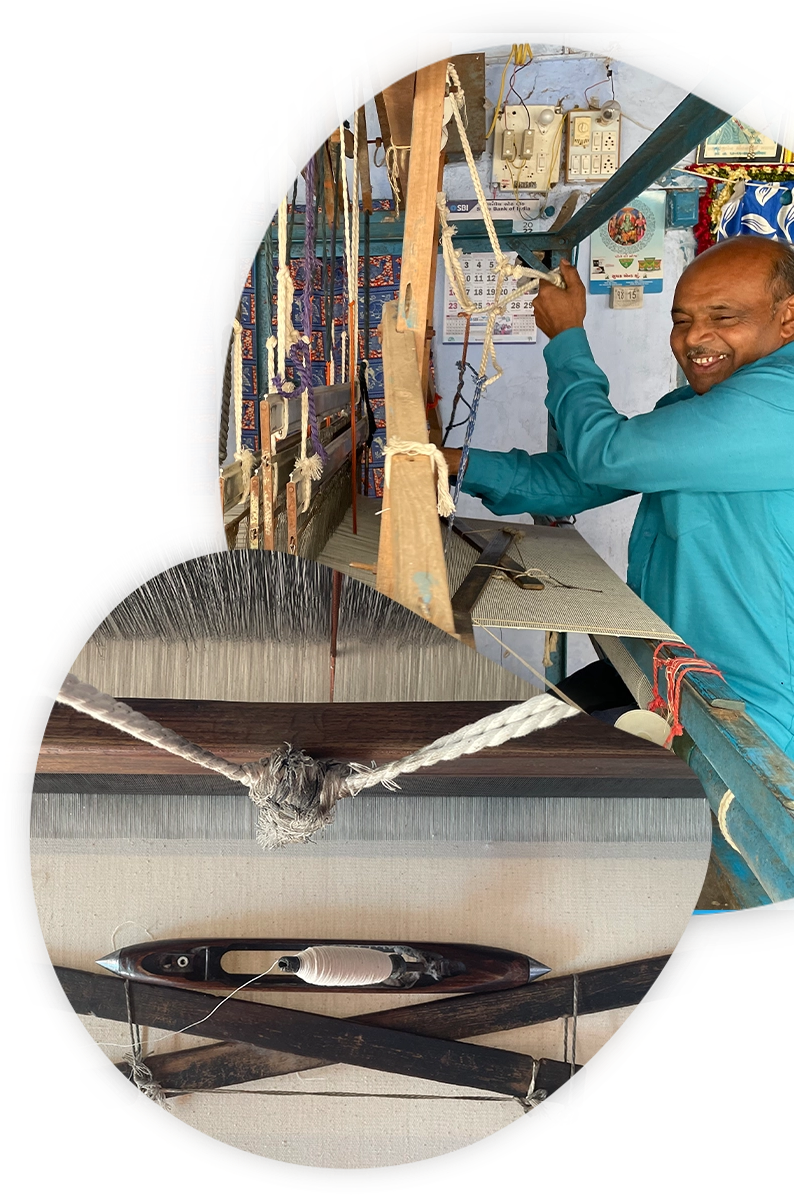
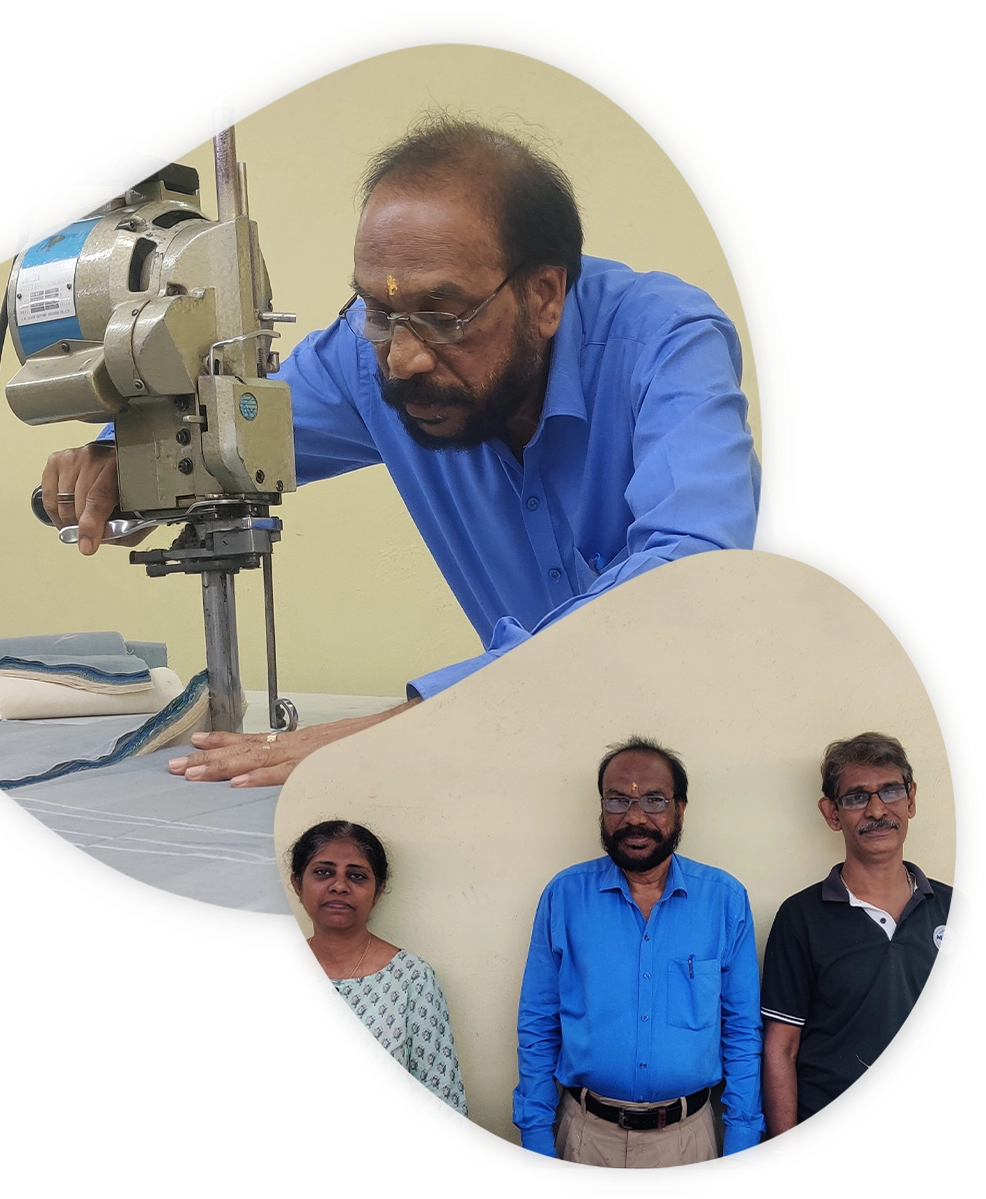
Tailoring on manually run machines:
The next step after the hand-woven fabric is ready, is to then stitch the TÜLA garments into attractive and comfortable kurtas, shirts, kurtis, kameezes, women’s tops, kids wear etc. The patterns are designed by volunteer designers like Nature Alley’s Tara Aslam, Nithya Krishnaswamy, Ghana and inhouse designers, and then tailored into garments in Chennai, Melkote and Bangalore.
We all know how the street corner tailors (& tailoring) are vanishing and how it used to be a large livelihood option for many single women. Its important to revive/restore that to ensure local economy, dignified income to the vulnerable folks in urban and rural context as against the huge cutting and stitching machines that displace 1000s of these livelihoods.
In the huge mills, its never one person who stitches but one would stitch just the arms, another the collar, another the pocket and so on. Thus, they will be devoid of skillset if they are displaced by more machines or automation. The working conditions are so scary and unworkable too.
It is important to ensure there are many humans tailoring manually locally.
At Tula, its the marginalised and urban poor who stitch manually (full garments) and having dignified incomes.
Tula gets done most of its tailoring at Eema collections (Chennai) and some small quantities in Janapada seva Trust (Karnataka).
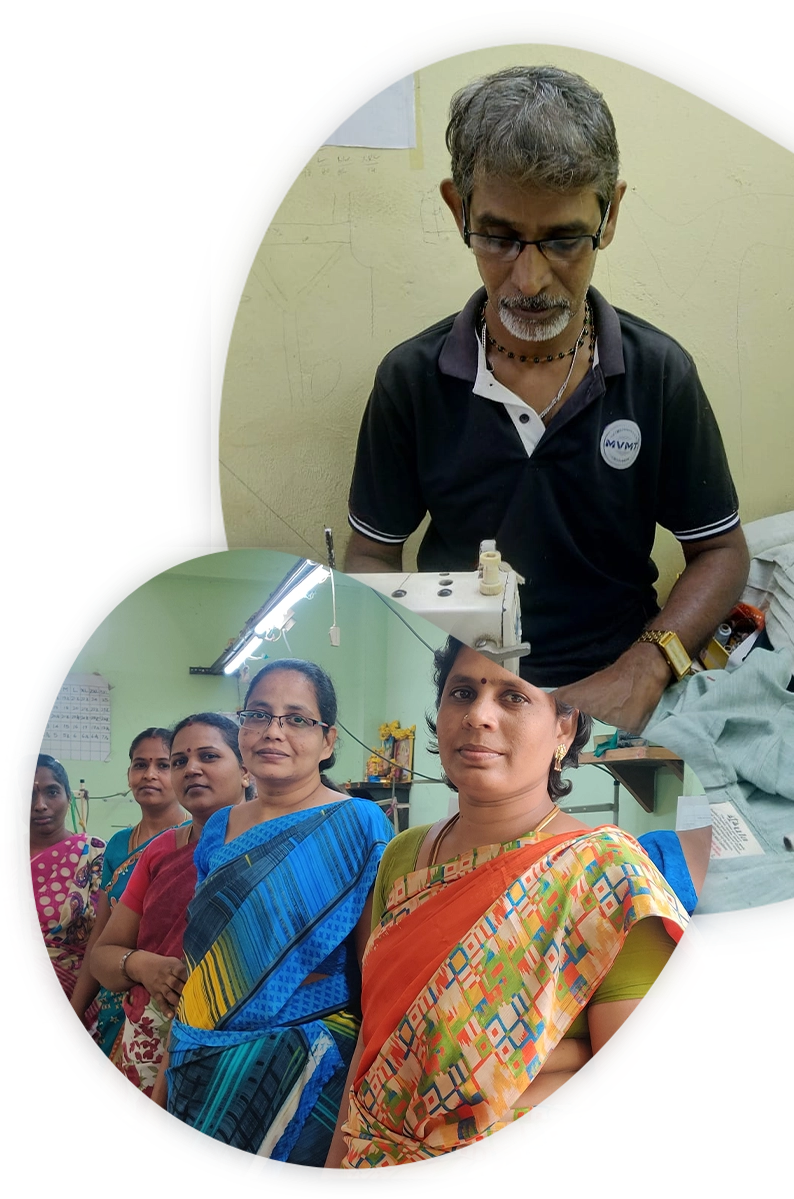
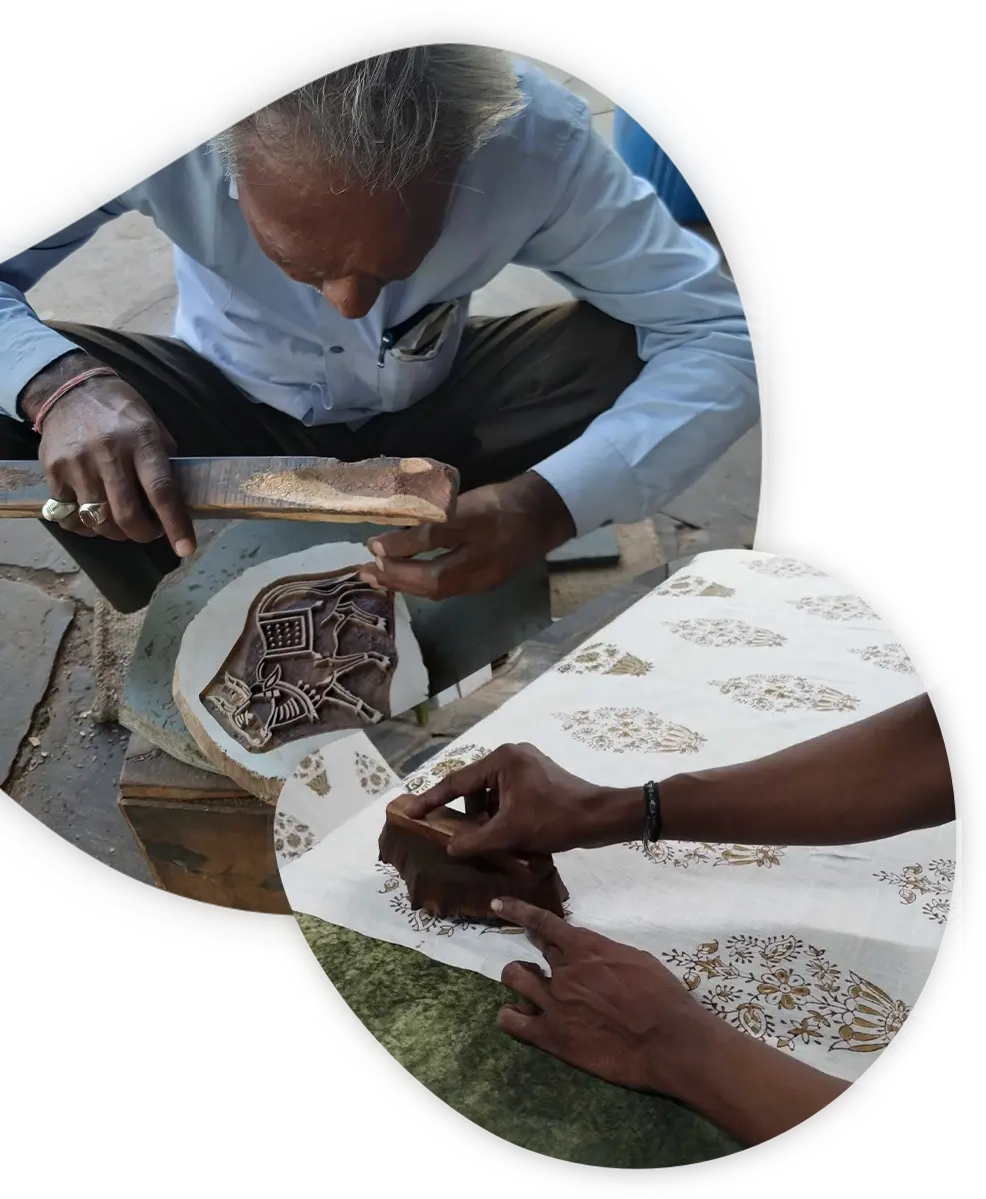
Block Printing
Block printing is a method of printing the design onto the fabric/paper/any medium using an engraved material like wood/steel.
Carving wood to its perfection is an art in itself, which requires a great fine motor skill. Most of the time for our designs, we require more than two blocks – one for the outline and the other two for filling in with two different colors.
We work with artisans in Pedana, Andhrapradesh who elevate the look and feel of the plain kora fabric by hand block printing on it. Most of their motifs are inspired from Pen Kalamkari designs, few are contemporary designs.
Any slight imperfection is a signature that they leave on the fabric indicating that it is handmade for sure.

